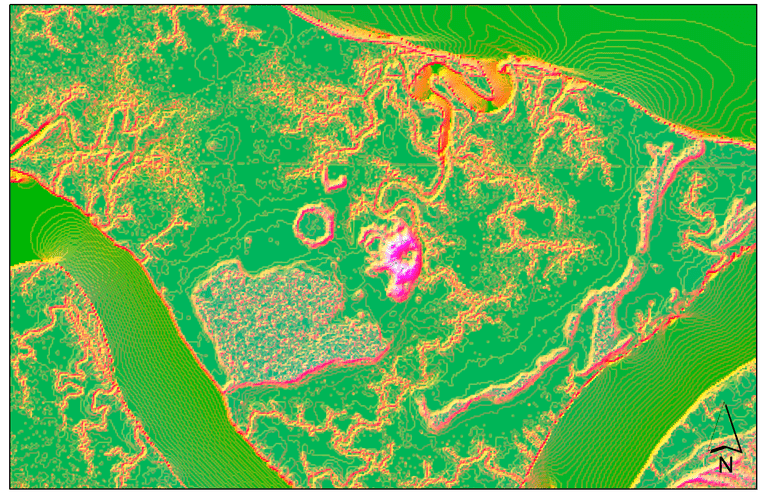As modern technologies are emerging, they can help us learn a thing or two about ancient history as well. In a new study published by Penn State researchers, a machine learning algorithm was able to find previously undiscovered shell rings and shell mounds left by Indigenous people 3,000 to 5,000 years ago.

Image credits: Dylan Davis, Penn State.
When humans build structures, it changes the environment around. Even once a structure is gone, the remains can still detectable for hundreds or even thousands of years. For instance, if you build a house, the porosity and topography of the surrounding soil will change ever so slightly, as will the chemistry of the soil beneath your house (as traces of man-made materials seep underground). Oftentimes, we can detect these changes if we look closely enough — and with the proper technological tool. Maybe it’s a tiny slope, maybe it’s some difference in soil humidity, or something else, but if we can gather the right type of data, we can see where human structures were built even thousands of years ago.
But it’s not easy. For decades, researchers looked for structures from the ground based on historical hints or what they could see with the naked eye. But vegetation can easily mask these subtle differences. In recent years though, aerial surveys have made a big difference. With airborne Lidar, Synthetic Aperture Data, or other types of spectral data, researchers were able to uncover more archaeological structures far easier than before.
But there was still a problem: there’s a lot of airborne data to analyze, and the data isn’t always clear. So how do you comb through all the data and find what looks promising? Well, you train an algorithm, of course.
The team began with a public Lidar data set and then used a deep learning process to recognize the algorithm to find shell rings, shell mounds, and other landscape objects that could be indicative of archaeological remains. They then manually went over the maps and located the known rings, using these to train the algorithm. For an even better training program, they rotated some of the maps by 45 degrees.
“There are only about 50 known shell ring sites in the Southeastern U.S.,” says Dylan S. Davis, doctoral candidate in anthropology at Penn State. Davis is also an author of the new study. “So, we needed more locations for training.”
“One difficulty with deep learning is that it usually requires massive amounts of information for training, which we don’t have when looking for shell rings,” Davis adds. “However, by augmenting our data and by using synthetic data, we were able to get good results, although, because of COVID-19, we have not been able to check our new shell rings on the ground.”
After training the algorithm, the team was able to use it to discover hundreds of new promising structures, including ones in counties where no previous discovery had been made. Since shell rings are thought to be centers of exchange of goods, they can provide a lot of information on ancient societies, showing what resources they traded and whether or not they used the available resources sustainably or not.

“The rings themselves are a treasure trove for archaeologists,” said “Excavations done at some shell rings have uncovered some of the best preservation of animal bones, teeth and other artifacts.”
Archaeologists will now try to explore these sites on the ground and confirm the findings. But what’s perhaps even more exciting is that the artificial intelligence algorithms that they used are already included in ArcGis, a commercially available geographic information system. This means that the algorithms could be trained to find different types of structures in different geographical areas, potentially opening a whole new era of airborne archaeological exploration. The researchers also provide the code and tools they used and encourage others to replicate their approach. It doesn’t even need to be archaeology — other structures of interest could also be scoured thusly.
“Archaeologists are using more and more AI and automation techniques,” Davis concludes. “It can be extremely complicated and requires specific skill sets and usually requires large amounts of data.”


